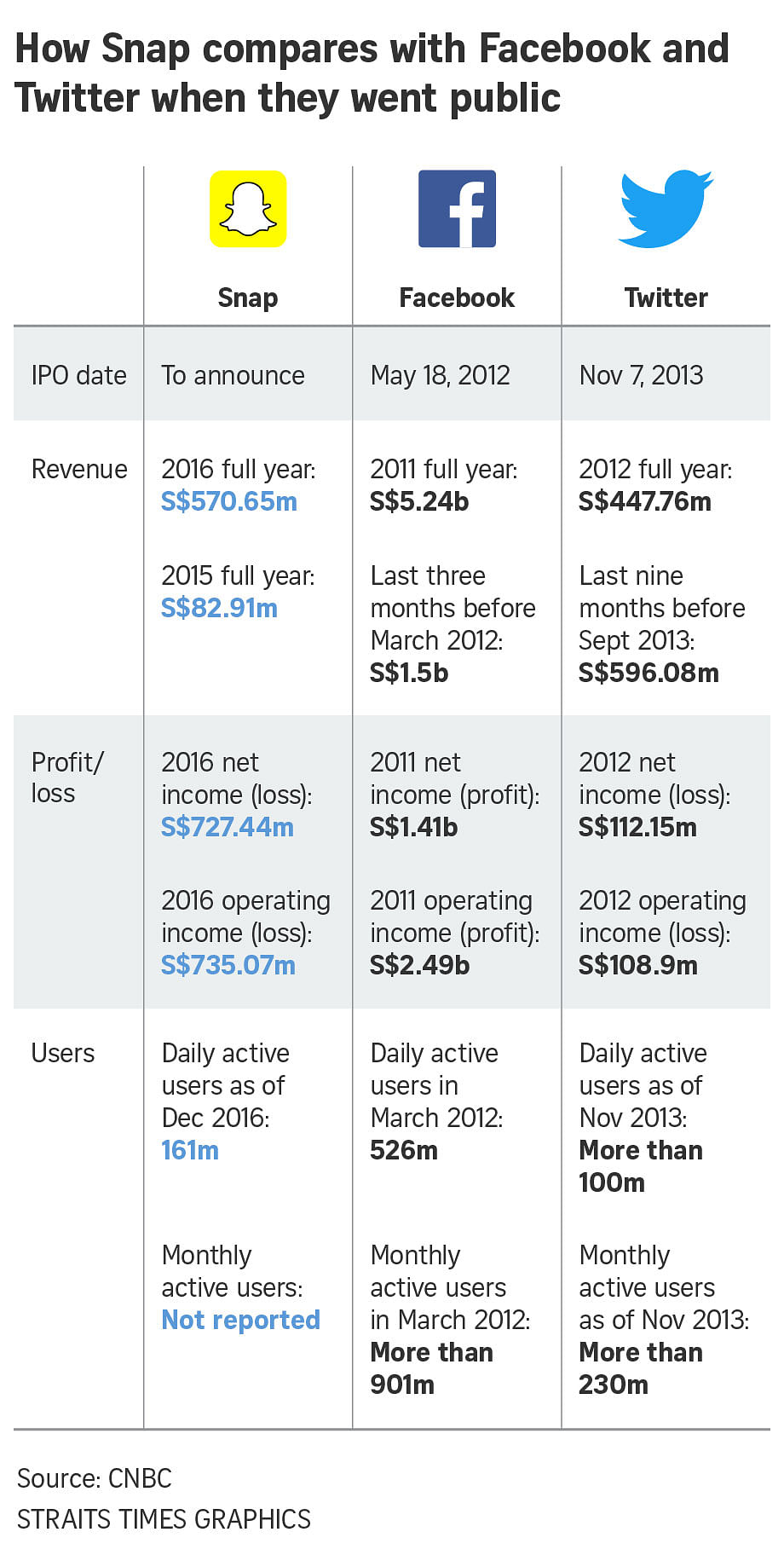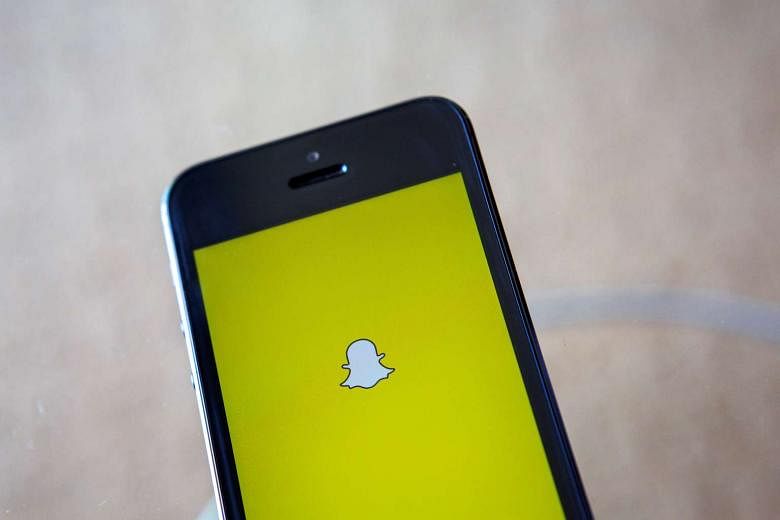NEW YORK (BLOOMBERG) - Snap Inc, the maker of the disappearing photo app Snapchat, filed publicly for an initial offering, the first US social-media company to do so since Twitter more than three years ago.
The company filed with an initial size of US$3 billion (S$4.23 billion), a placeholder amount used to calculate fees that may change. Snap plans to raise as much as US$4 billion in the IPO, people familiar with the matter have said, for a market value of as much as US$25 billion.
Based on that valuation, co-founders Evan Spiegel and Bobby Murphy, who each hold 20 per cent of Snap, would each own shares worth about US$5 billion.
Venture capital firm Benchmark is the biggest outside investor, with a 12 per cent stake worth an estimated US$3 billion. Lightspeed Venture Partners owns 7.7 per cent worth about US$1.9 billion.

Snap plans to use proceeds from the offering for general corporate purposes, which may include acquisitions, the filing shows.
In filing for an IPO, the veil was lifted on how much money Snap is losing.
It posted a net loss of US$515 million last year, according to the company's IPO prospectus, shelling out cash to infrastructure providers including Alphabet's Google and for research and development. That compares with a loss of US$382 million the previous year. Revenue for 2016 was $404 million.
As a private company, Snap has benefited from a funding environment that valued growth over profitability. A chart showing increasing revenue or engagement meant easy access to capital. But large losses may ring warning bells for investors who have been burned by past bets on unprofitable companies that went public.
The filing depicts a budding and inventive company, aiming to build a booming advertising business around young people, an elusive set of smartphone addicts, deeply engaged in its product.
It also warns of mounting challenges to further growth: stiff competition, slowing user growth, and mounting losses that may remind investors of once-ascendant, now-struggling companies such as Twitter.
"We have a short operating history and a new business model, which makes it difficult to evaluate our prospects and future financial results," Snap said in the Thursday filing. That "increases the risk that we will not be successful."
The company's strategy in the face of those circumstances "is to focus on innovation and take risks to improve our products."
In the meantime, Snap is focusing investors' attention on its track record for developing catchy products. Through coluorful graphics in the IPO prospectus, the company highlights its daily active user count of more than 150 million as well as ad-attracting offerings including Lenses and Geofilters.
Snap cites engagement as key to future success, at the same time admitting that metrics to measure the company's reach - such as daily active users - have been and will continue to be "lumpy and unpredictable." Quarterly average revenue per user on a global basis, a key metric showing how the company makes money from user engagement, climbed to US$1.05 in the fourth quarter of 2016 from 31 cents in the year-earlier period.
How much risk investors are willing to stomach could be affected by a unique feature of Snap's IPO - it could be the only listing of non-voting stock on a US exchange, according to the prospectus.
That means the glory, or the blame, will be at the feet of founders Evan Spiegel, the chief executive officer, and Bobby Murphy, the technology chief, who have control over shareholder votes and strategic vision.
The public life of Twitter, the last US social-media company to go public in 2013, will cast a shadow on Snap's debut. Twitter's IPO prospectus disclosed widening quarterly losses, and the micro-blogging site didn't grow fast enough to address the problem. Three years later, it's still not profitable.
Privately, Snap's management has likened the business model more to Amazon. In a move straight out of Amazon founder and CEO Jeff Bezos's playbook, Snap wants to shift investors' focus to the company's long-term vision.
Bezos has invested heavily to enter new markets, at times alarming investors with extensive spending to that end. While some gambits have been successful and others duds, it's worked out favorably for investors who've stuck around for the long haul: Shares are up almost 43,000 per cent since the company went public in 1997, and 2,100 per cent in the past 10 years, according to data compiled by Bloomberg that accounts for stock splits.
Spiegel has fewer successes to point to when asking investors to buy into his long-term plans, and a different set of challenges.
Unlike Amazon, Snap relies on another company's infrastructure. Google provides most of its computing, storage and bandwidth, and any disruptions to Google's cloud functioning could "seriously" hurt its business. Snap said it plans to spend US$2 billion with Alphabet over the next five years to use Google's cloud-computing services.
In terms of competition, the barrier to entry for social media and communications is lower than Amazon's e-commerce business or cloud-computing services. In addition to Google and Apple, Snap named Facebook, including its WhatsApp and Instagram applications, and Twitter as significant rivals.
The IPO prospectus is the first opportunity for outsiders to get a closer look into a company that's known for, among other things, its culture of secrecy. The next step will be the roadshow, in which Spiegel and his management team will endeavor to explain the company's strategy and prospects to potential investors.
With additional information from CNBC

